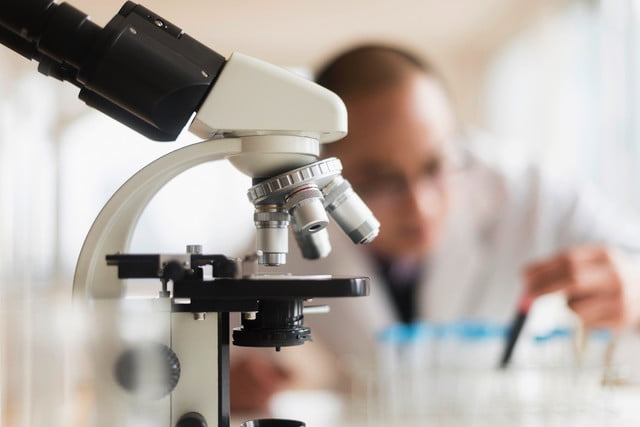As technology goes, microscopes are pretty smart, allowing us to examine samples blown up thousands of times their original size. But what if a microscope was able to identify what it was looking at? And what if this capability could be used to save people’s lives?
That’s the idea behind new work carried out by microbiologists at Beth Israel Deaconess Medical Center (BIDMC), a teaching hospital at Harvard Medical School. Researchers there have developed a microscope that’s enhanced by machine learning technology to help diagnose potentially deadly blood infections, greatly improving patients’ odds of survival in the process.
“When someone has an infection in the hospital, patient samples are sent to a microbiology laboratory, where a diagnosis is made,” Dr. James Kirby, director of the Clinical Microbiology Laboratory at BIDMC and associate professor of pathology at Harvard Medical School, told Digital Trends. “There are different types of infections including bacterial, fungus, and parasites. These could be bloodstream infections, urinary tract infections, pneumonia, or diarrhea. The patient sample is examined under a microscope by a microbiology technologist, who recognize shapes, colors, and patterns of the organisms, and determines the class or type of infectious agent. This critical information is used by physicians to choose effective treatment.”
So why use artificial intelligence (A.I.)? The reason is that it takes years to become an expert who can accurately and consistently recognize microbes. It also takes a long time to review a sample — something that’s less and less easy to do in busy modern labs. To create a high-tech alternative, the researchers trained a convolutional neural network to recognize infectious agents in patient samples by showing it 100,000 training images. In tests, it was an astonishing 95 percent accurate at making diagnoses.
“We can envision an A.I. that makes a primary diagnosis once it goes through its full pace of training and becomes expert,” Kirby continued. “However, one thing we are really excited about is something we call ‘technologist assist.’ The idea is to combine the skills of a microbiology technologist and A.I. Specifically, an automated microscope will capture hundreds of images from the patient specimen. The A.I. program would then identify select images containing microbes and present them to a technologist on a computer screen with a proposed diagnosis. The technologist would then scan the on-screen images and confirm the diagnosis. Microbes are often very rare in specimens, and it may take a long time for a technologist to identify microbes through the standard manual way. Technologist assist would reduce the technologist time needed for a diagnosis to seconds.”
A paper describing the project was recently published in the Journal of Clinical Microbiology.
Editors’ Recommendations
- Tweet-analyzing algorithm can detect depression sooner than a human doctor
- Weekly Rewind: Galaxy Note 8 vs. iPhone 8, paper lightsabers, Nissan Leaf review
- If young blood can really halt death, things are going to get weird
- Why human-robot relationships are totally a good thing
- The best movies on Hulu

